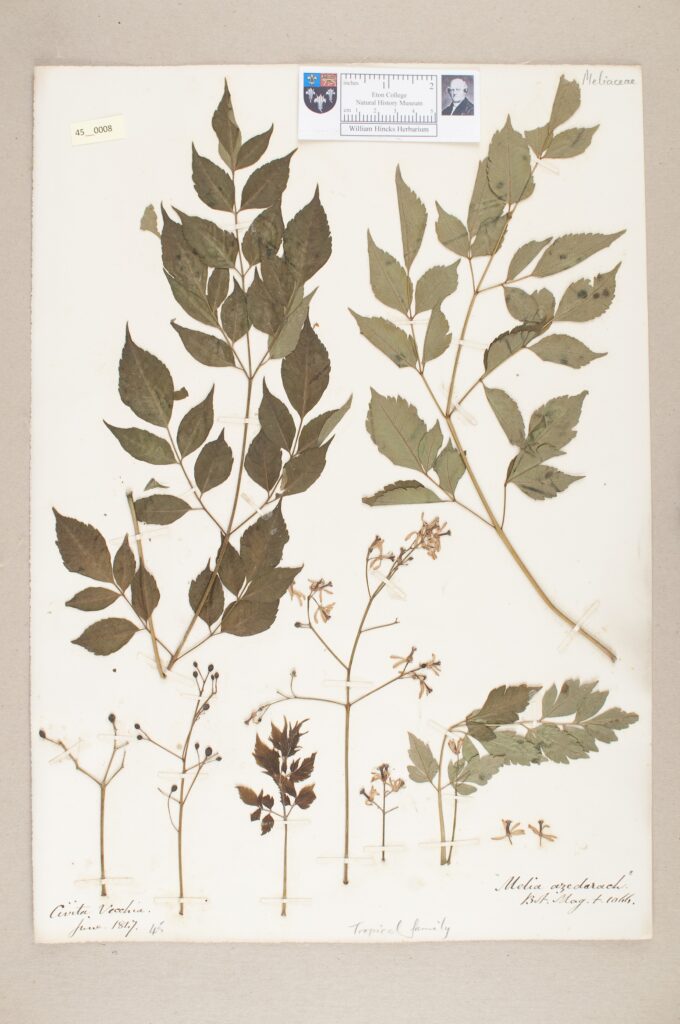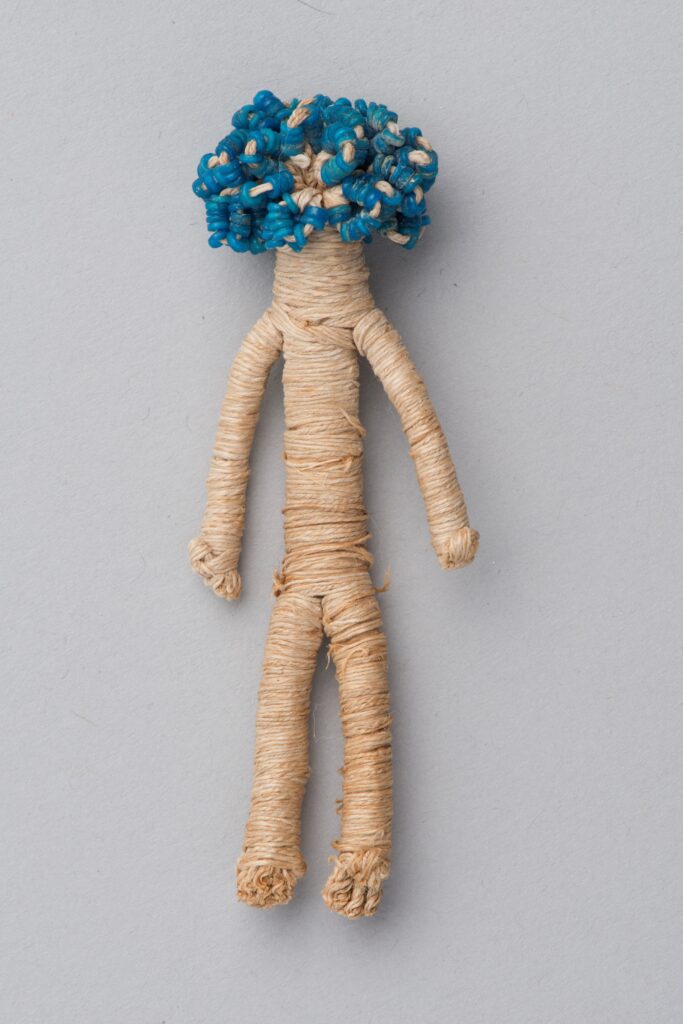St Andrew’s Day traditions viewed through the Eton College Collections
St Andrew’s Day, celebrated in the Michaelmas half, has become one of the two biggest holidays marked at Eton College, the other being the Fourth of June which takes place in the summer. (In one of Eton’s quirks, they are not held on the actual 4th June or on St Andrew’s Day–30th November.)
A dip into the Archives tells us that this wasn’t always the case, however. Founder’s Day on 6th December overshadowed St Andrew’s for many years, especially for King’s Scholars.
“Better to come down for Founder’s Day than St Andrew’s Day ‘which is the event of the half for us in College”
John Burton Sanderson Haldane, November 1907 [ED 121/15]
Emblem of St Andrew
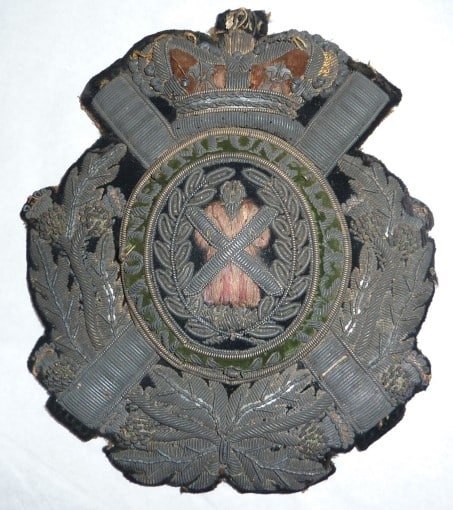
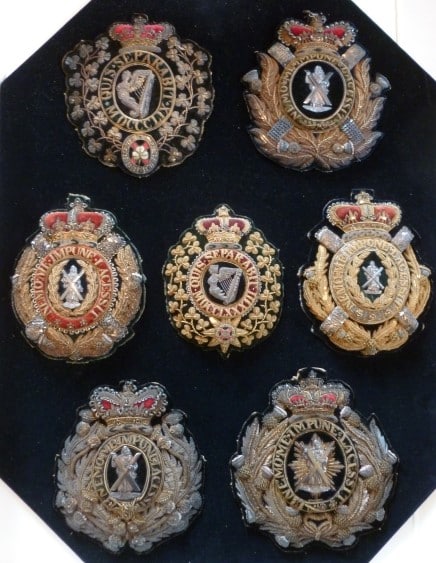
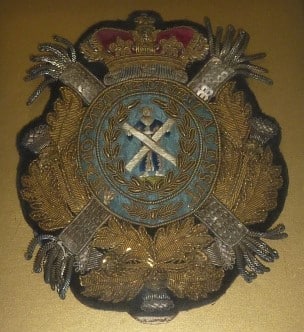
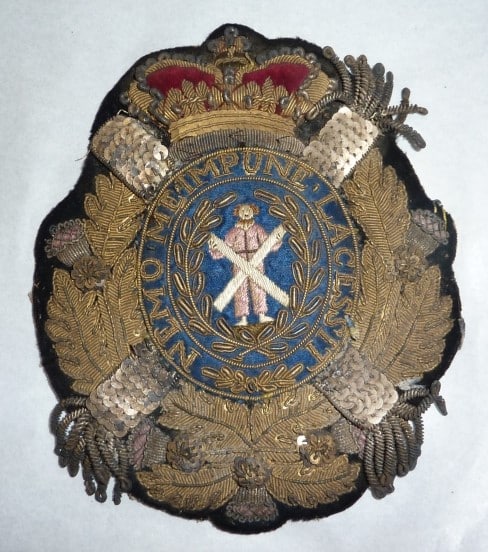
For many years, it was tradition for the highest ranked boy of each of the home nations to give the emblem of the national saint to the provost and headmaster on that saint’s day. These were considered holidays for the boys (although St George’s Day has only been a holiday since 1836).
Mr. Keate received a beautiful St. Andrew’s Cross from the Duke of Buccleuch.
30 November 1822, diary of Margaretta Brown
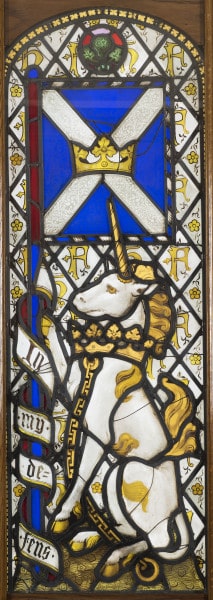
The St Andrew’s Cross (or flag of Scotland) flies over Upper School during each St Andrew’s Day celebration at Eton. Sadly, this year there can be no visitors to the college for the event, but the flag is represented by this stained-glass panel, which depicts a heraldic unicorn bearing a banner with the flag of St Andrew. [1]
Exhibitions and performances
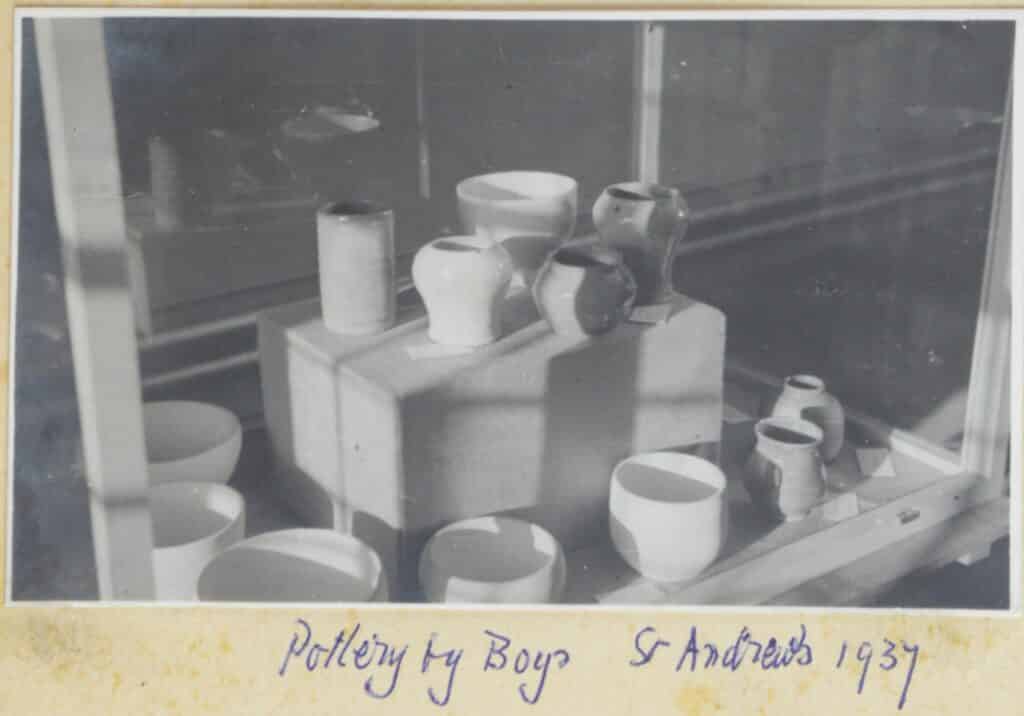
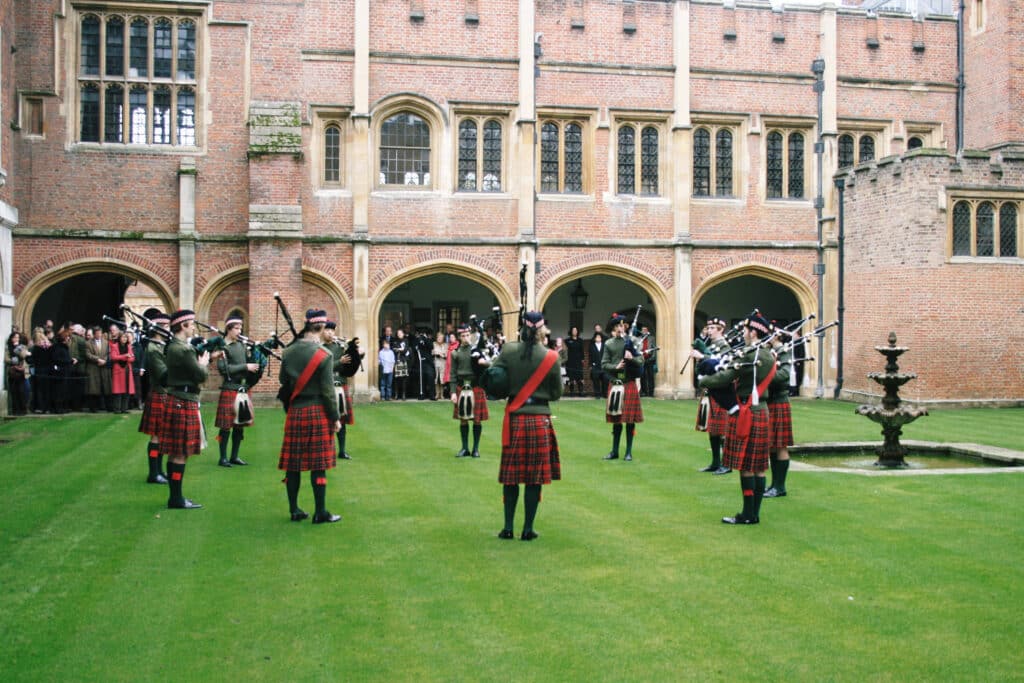
Today there is a packed schedule of events each year for the Eton community: boys, parents, staff and their families. The day starts with chapel services and assembly, followed by a variety of speeches, debates, performances and concerts, exhibitions and sports fixtures.
Publications
Etonians have been producing periodicals since the late 18th century when The Microcosm was issued by a group of friends at the school in 1786-87. Many of these publications, written and edited by boys, were irregular or short-lived, hence the umbrella term “ephemerals”. Such magazines produced by academic departments or boys’ societies are still a familiar feature of Andrew’s Day and the Fourth of June. This year their distribution will take place mostly online, and this slideshow presents a selection of designs from a century of St Andrew’s Day ephemerals.[2]
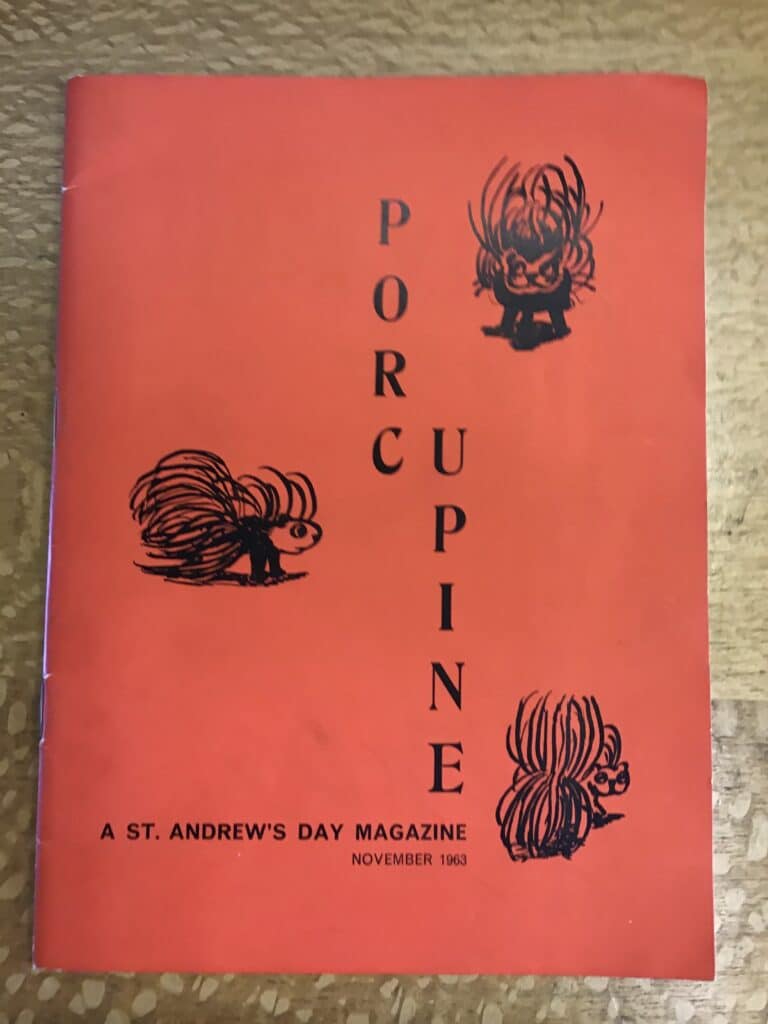
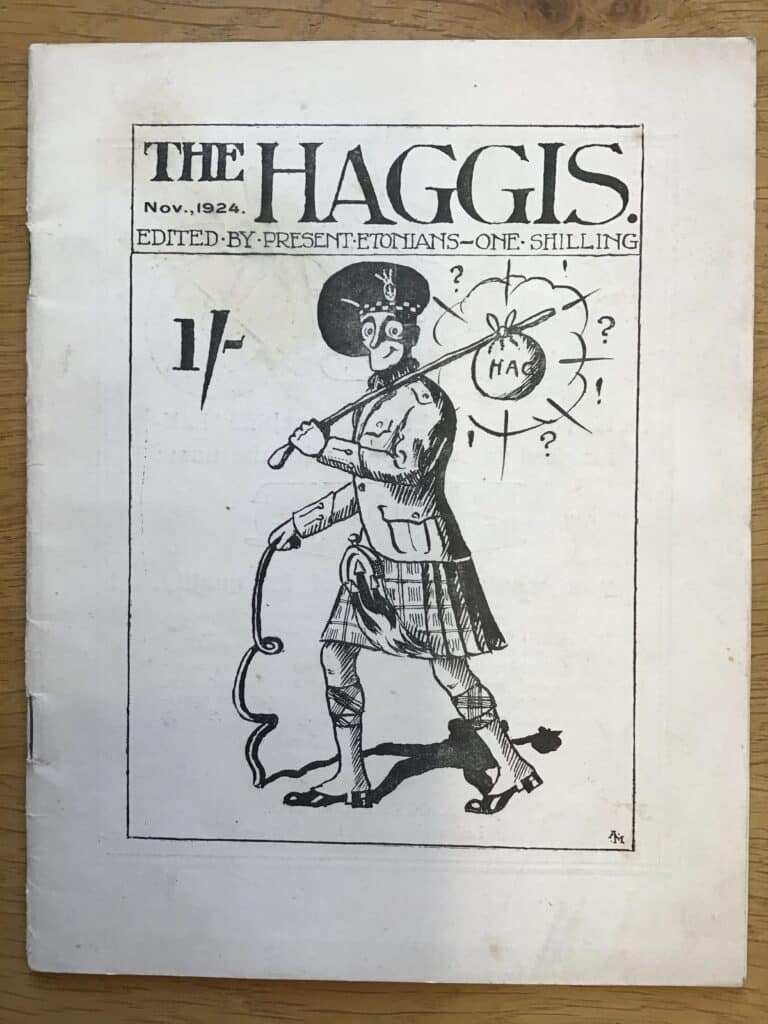
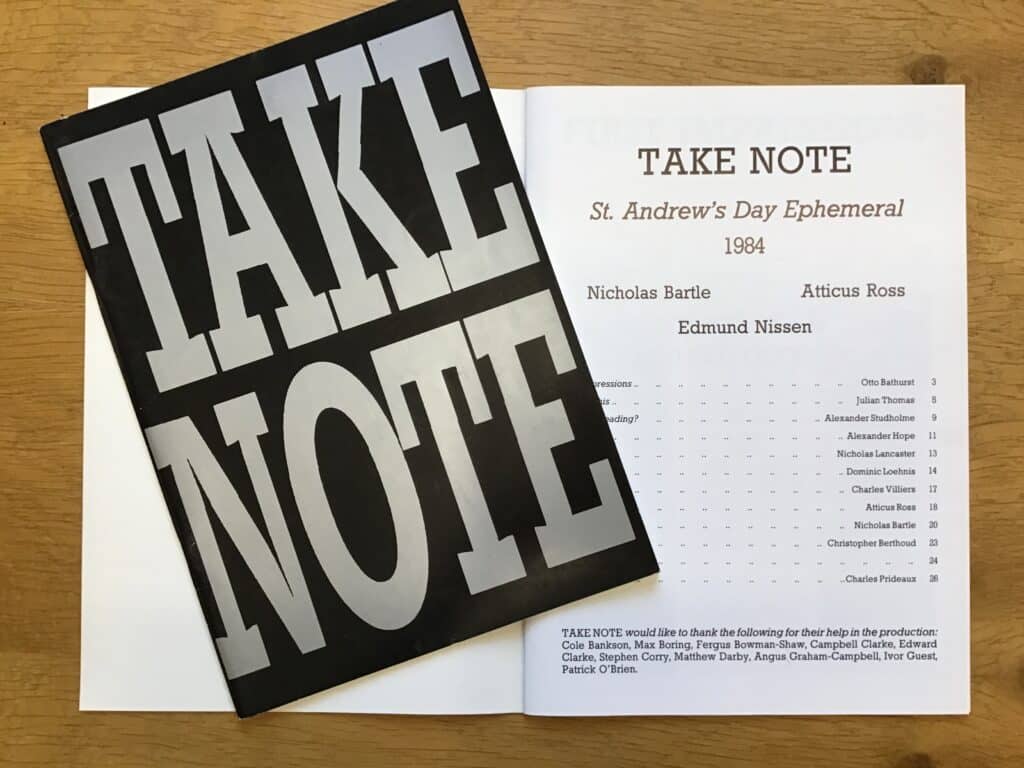
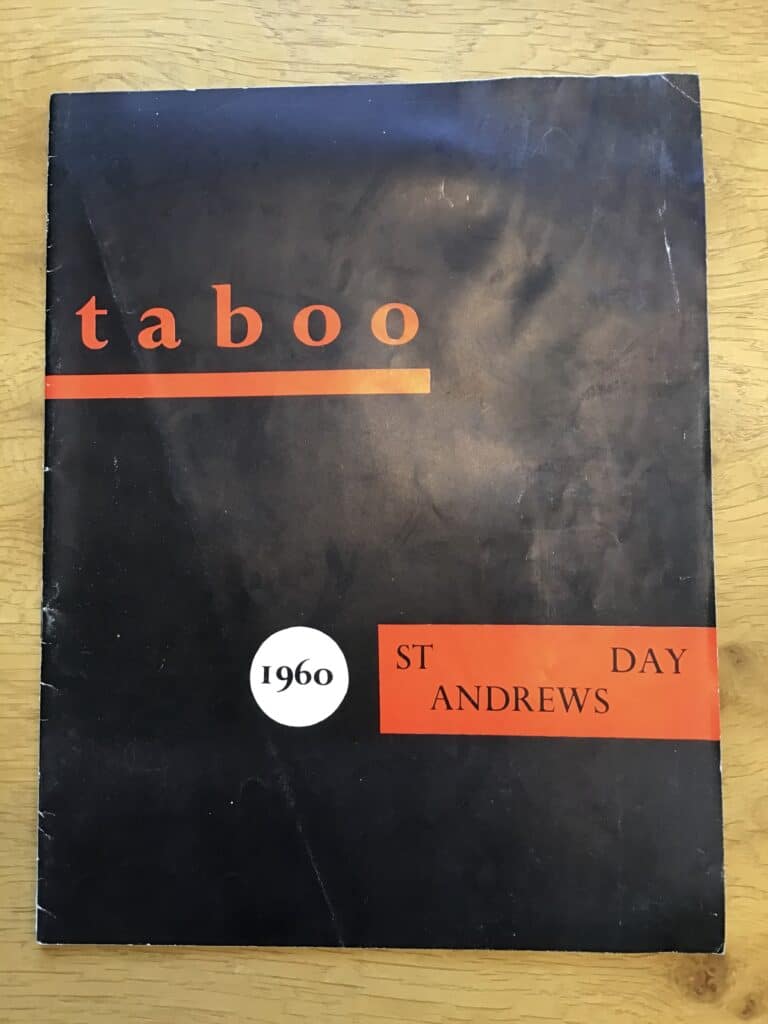
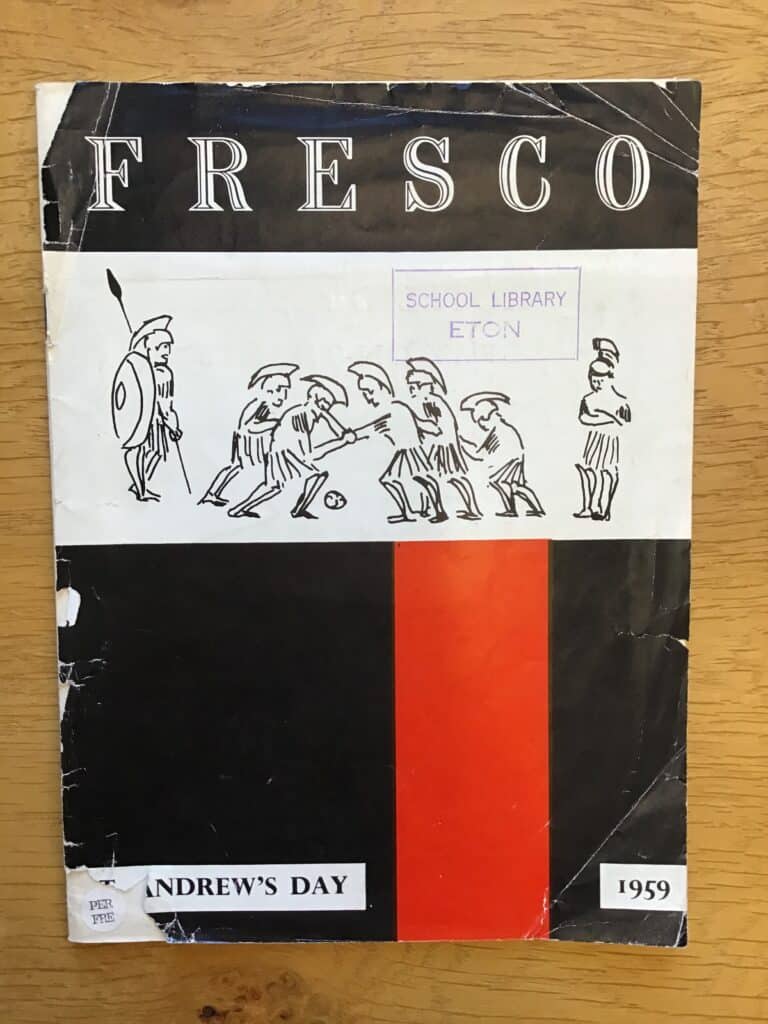
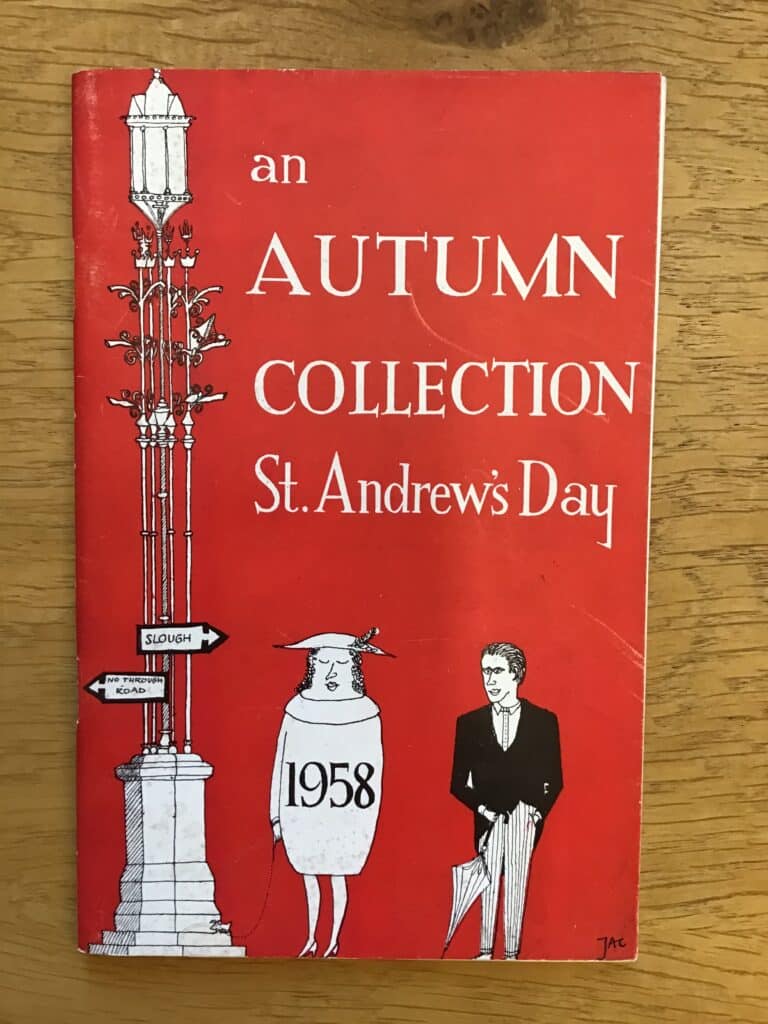
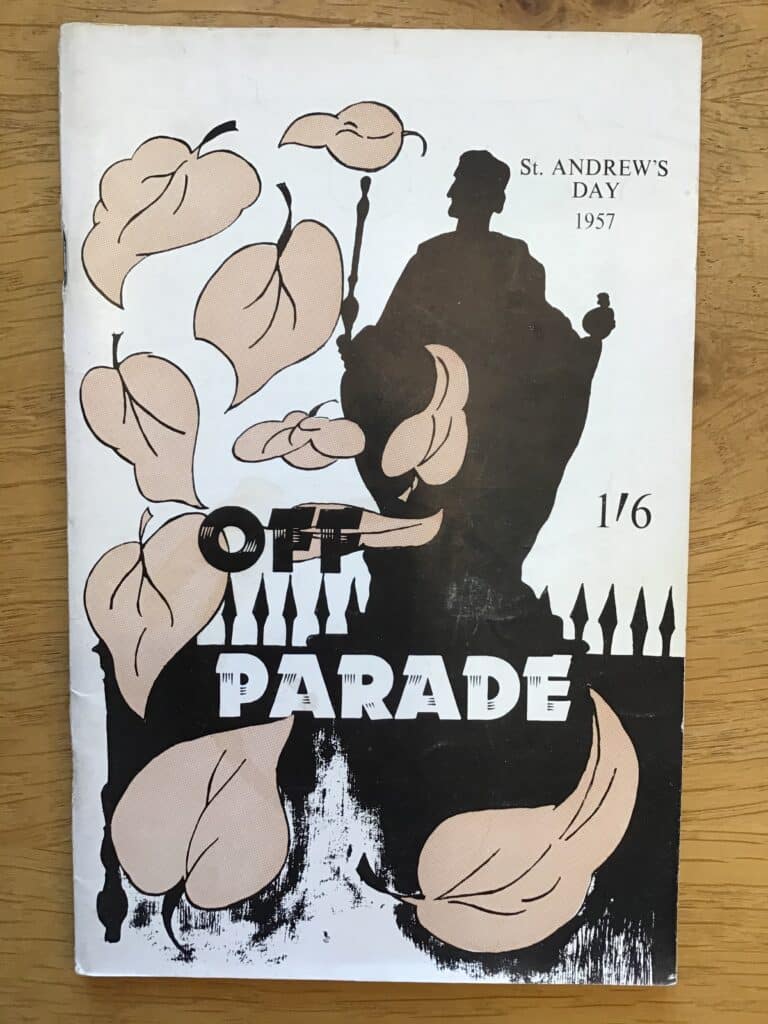
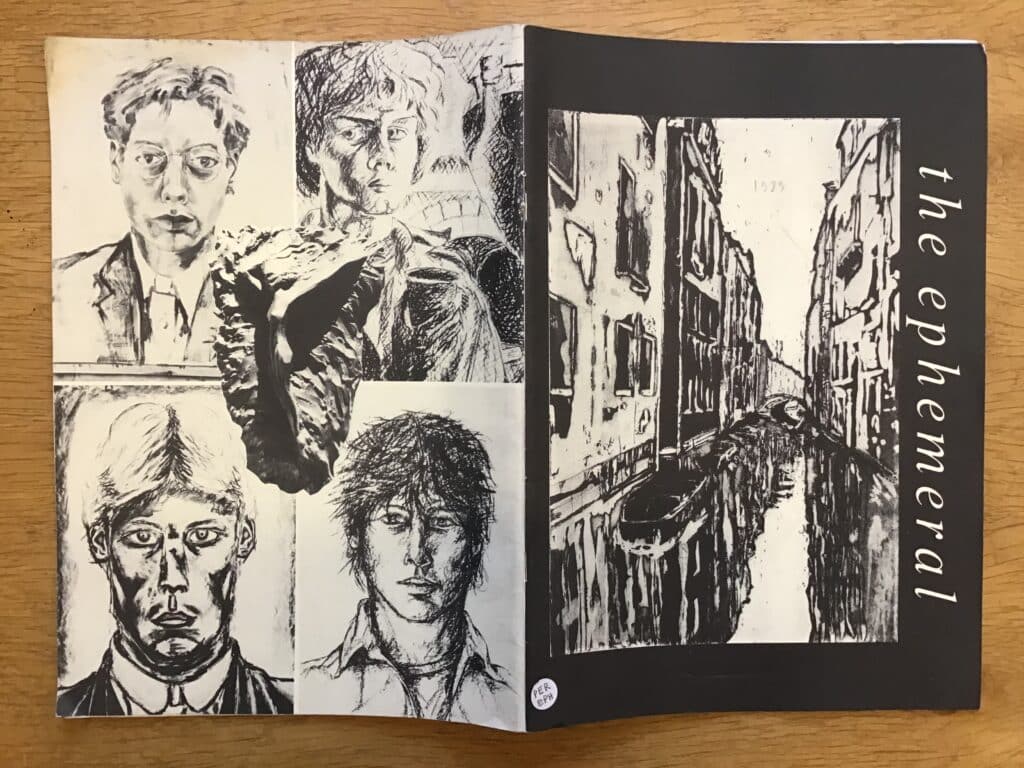
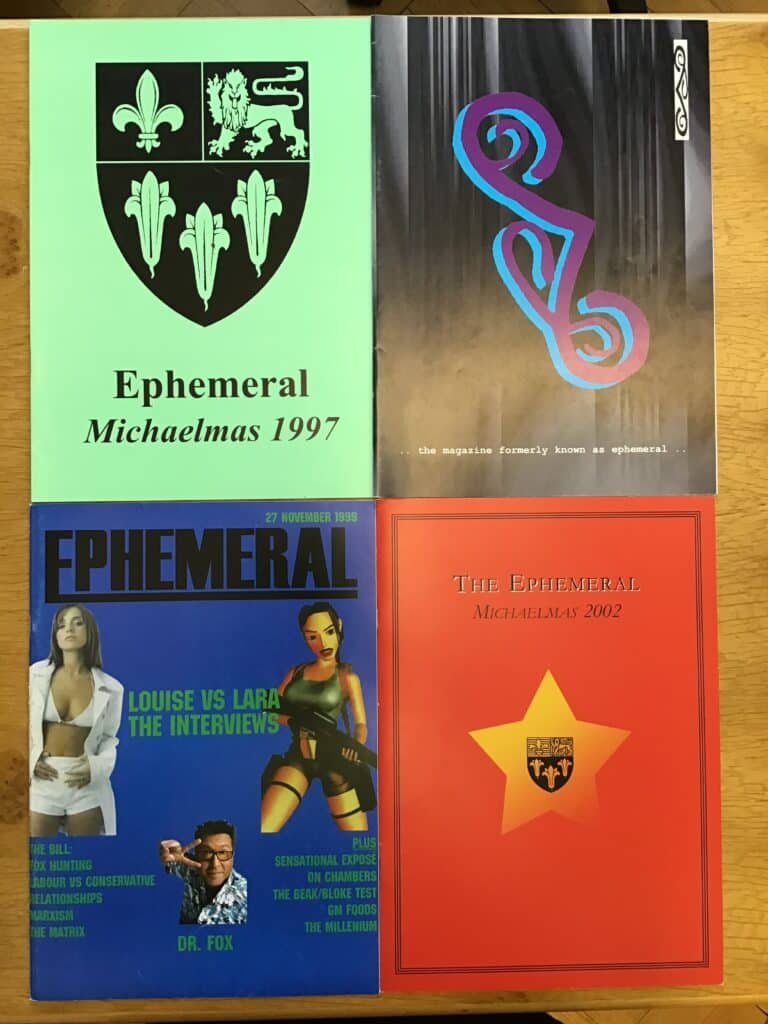
Oppidans v. College at the Wall
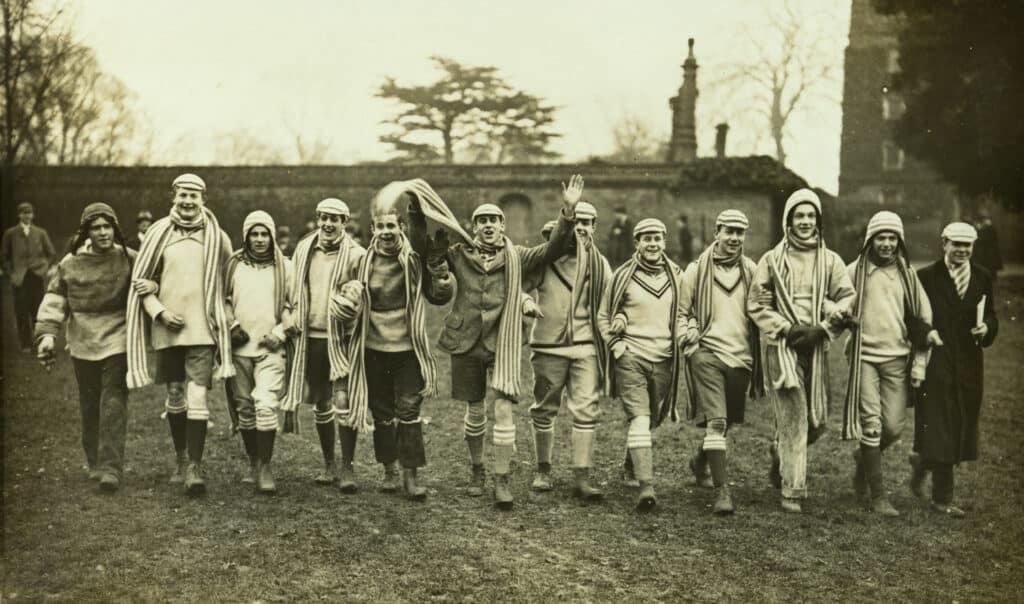
Along with Oxford v. Cambridge at the Field and the Lower Boy House Cup, one of the key fixtures of St Andrew’s Day is the annual Wall Game match between Collegers (King’s Scholars) and Oppidans (the rest of the school). The game is a form of football, played along a length of wall that runs along Slough Road.
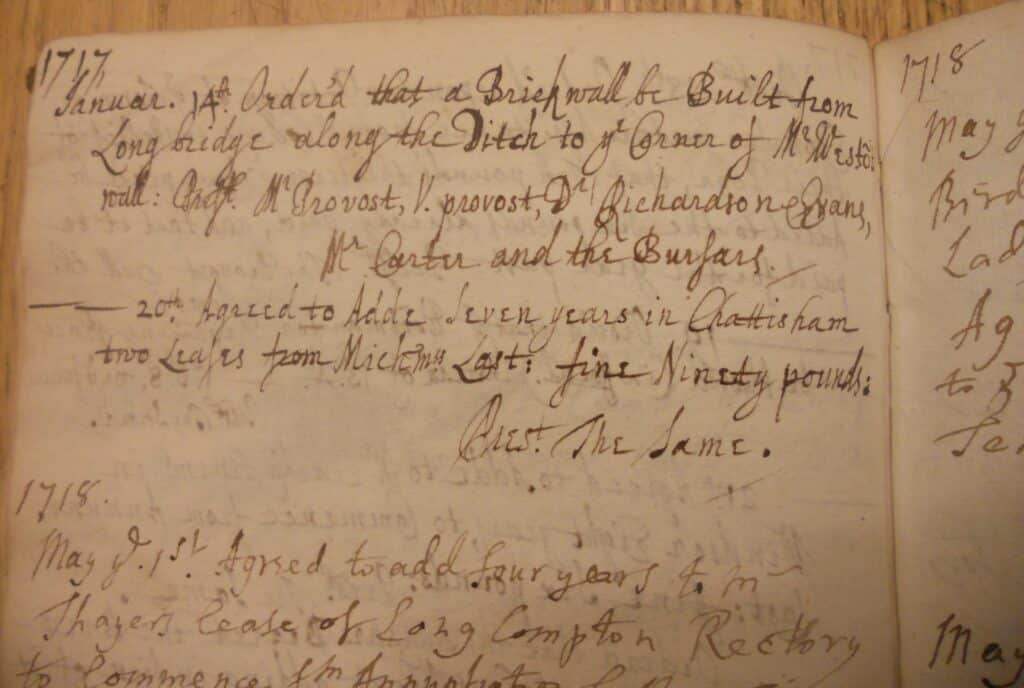
From the minutes of a meeting of the Provost and Fellows [ECR 60/6/1/3]
The college accounts from 1717 to 1718 show the purchase of 1000 rubbing bricks, 48,000 bricks, 1100 stock bricks, lime, flint and sand for building of the wall [ECR 62/16].
John Melvin’s drawing records the brick wall that separates the Slough Road and College Field, to the north of Eton College. Some college buildings can be seen in the distance.[3]
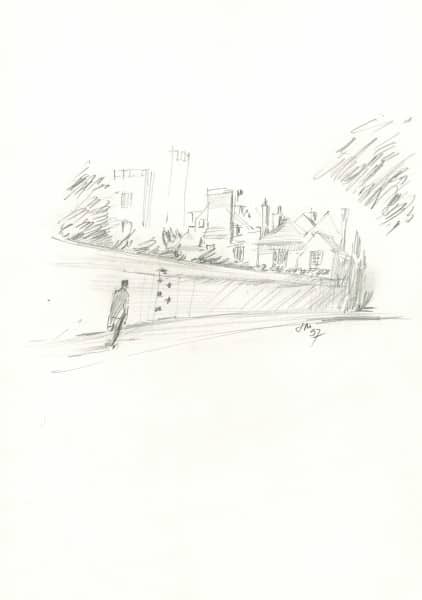
(FDA-D.1283-2015)
A Collegers v. Oppidans match at the wall is alluded to in 1820, but full records only date from 1841 (the year that the first rules appear). In 1827 the match was banned due to a fight, but was revived again in the mid-1830s.
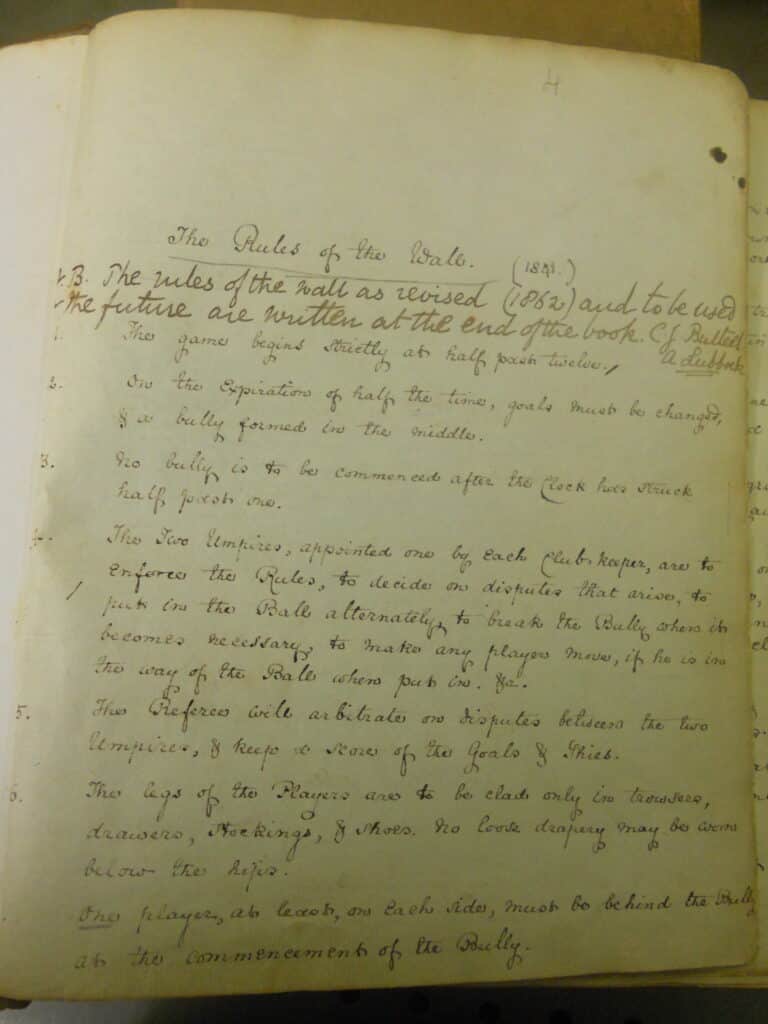
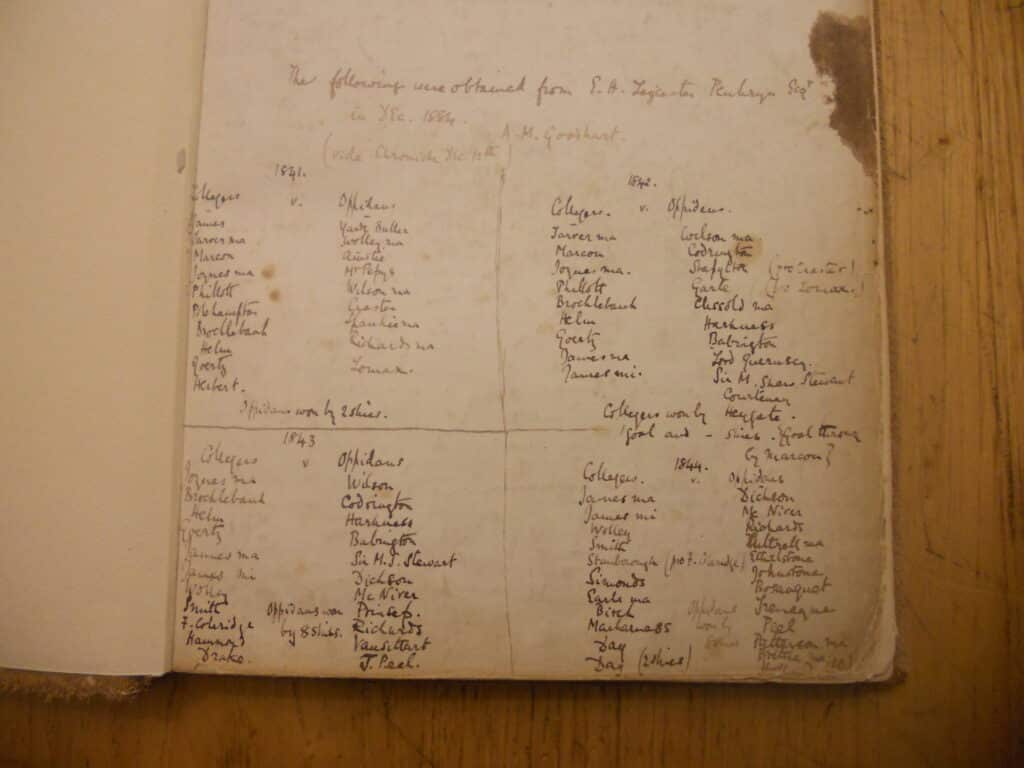
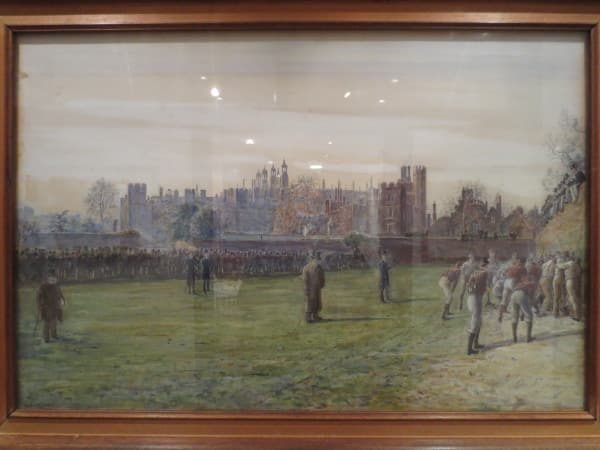
(FDA-D.66-2010)
Thomas Hemy’s watercolour, showing the Eton Wall Game in progress, was painted in 1887. The players are seen huddled in a ‘bully’ against the wall, whilst a crowd of onlookers, both those on the ground and boys sat atop the wall, enjoy the spectacle.[4]
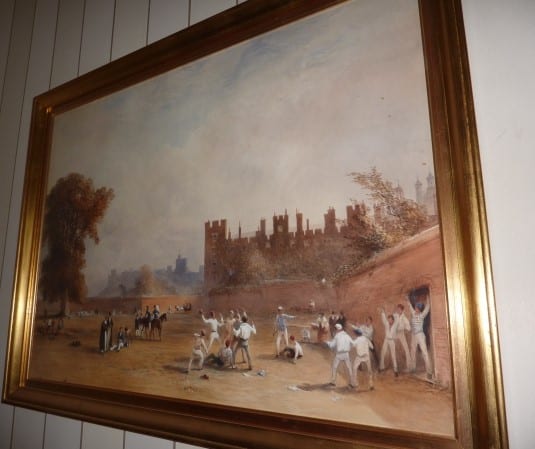
(FDA-D.206-2010)
There seem to be very few spectators at this particular Wall Game, captured in watercolours by former Eton Drawing Master, William Evans. The title of this work references the action, which shows the moment after a ‘shy’ (worth one point) has been scored at the opponents end of the field, known as the ‘calx’. Following this, the scoring side has an opportunity to throw the ball at a target (a door in the wall) which, if successful, will score a further nine points.[5]
There are many accounts from boys of the St Andrew’s Day match, which remains to this day a key feature of the day’s festivities. The match has become an iconic part of life at the school, and lives on in memories of boys long after they leave Eton.
St. Andrew’s. I was in an awful funk all the night, but when I got up, I felt all right. We (the Oppidans) had breakfast together at the Christopher, and went down to the ground expecting a licking. The first bully we made a run down, and the second bully, I kicked it into calx. Gratias Deo! We then claimed two shies; both disallowed . . . I got tremendously shinned once in charging into the bully, and came away rather in a wounded condition [the match was a draw.] We hoisted Benson back to his dame’s. After 4 we all went to the Christopher, and had songs, and speeches, and most awful row, all increased by punch and bishop. At about a quarter to five, all came down and went down to College again where Benson, Foley, me and Goldie were all successively hoisted. It was a very rum hoisting for it was almost dark, and all Eton turned out and ran and shouted in the gloom. I had dinner with my tutor and went to bed pretty well tired out with the day’s excitement.
30 November 1866, diary of C.H.H. Parry
In weather fair or foul the sight of players returning from the Wall caked in mud is a familiar one; the mud from this game being such a distinctive feature that Old Etonians were reminded of it when encountering mud in the trenches in World War One.
‘The mud of course is terrible, in some places a sort of pea soup mixture similar to that which is found under the wall after St. Andrews day’
15 Jan 1915, Robert Selwyn Pryor archive [MS 942]
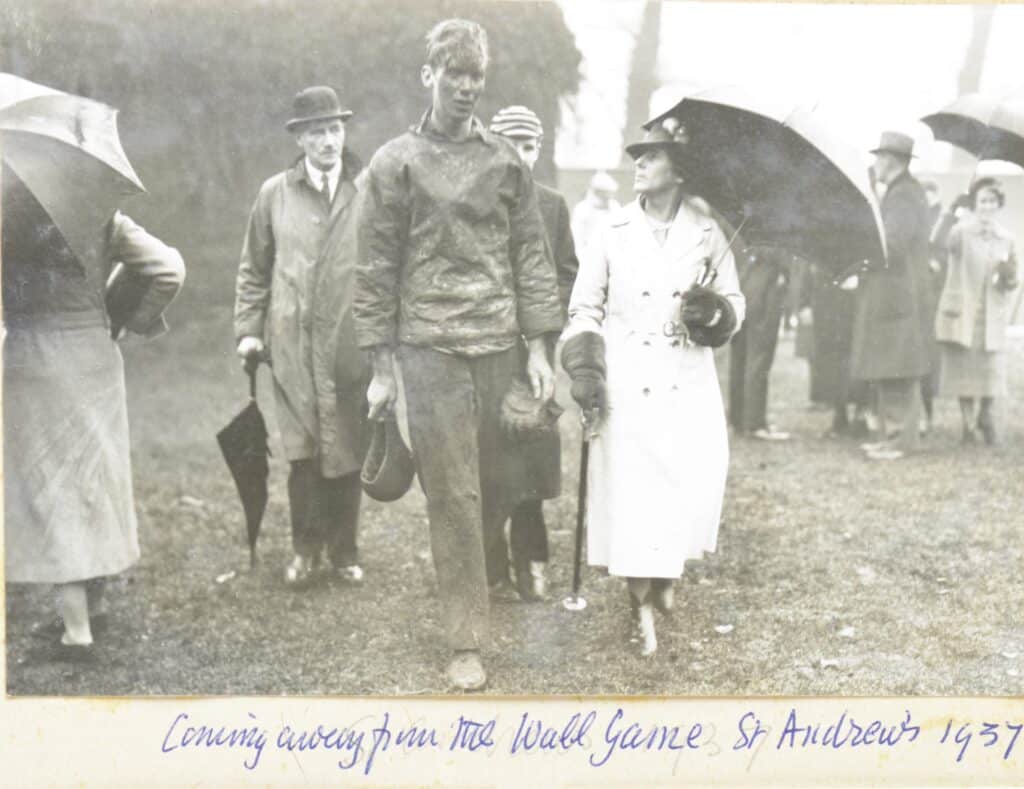
The Keeper of College Wall recorded the names of the players on each team and the final scores in the Keeper’s books. These lists were then beautifully decorated with illustrations. This gallery shows some examples of these.
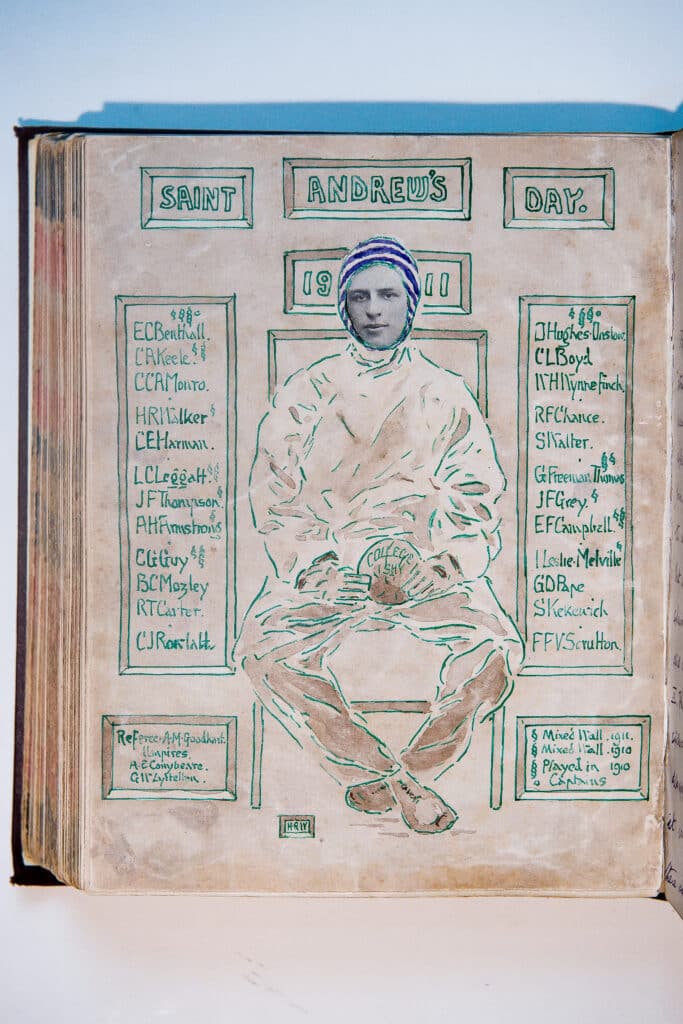
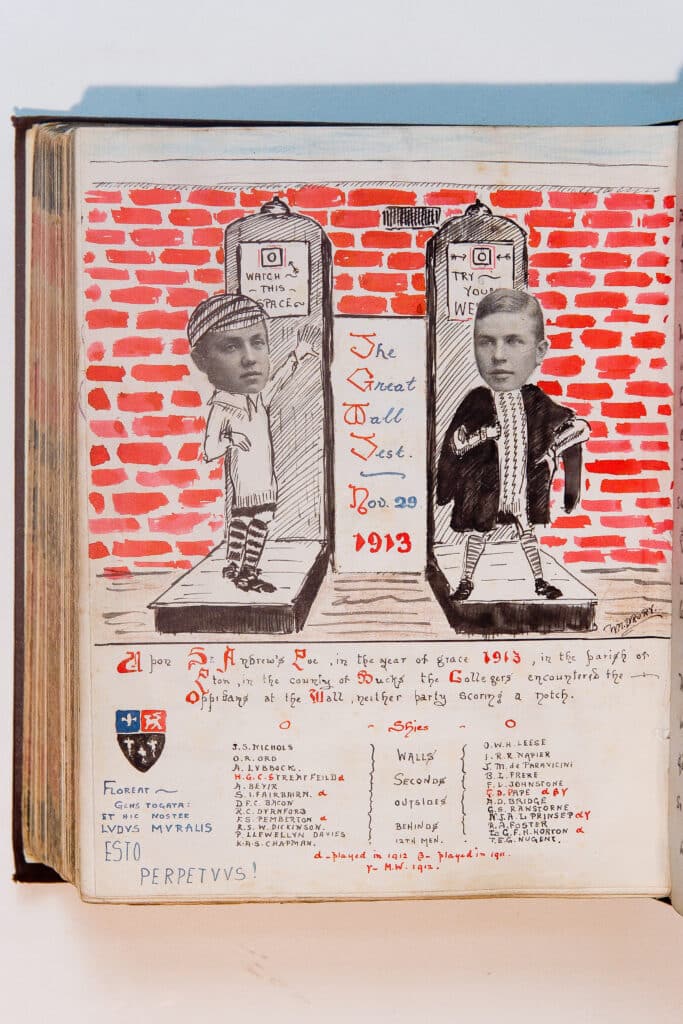
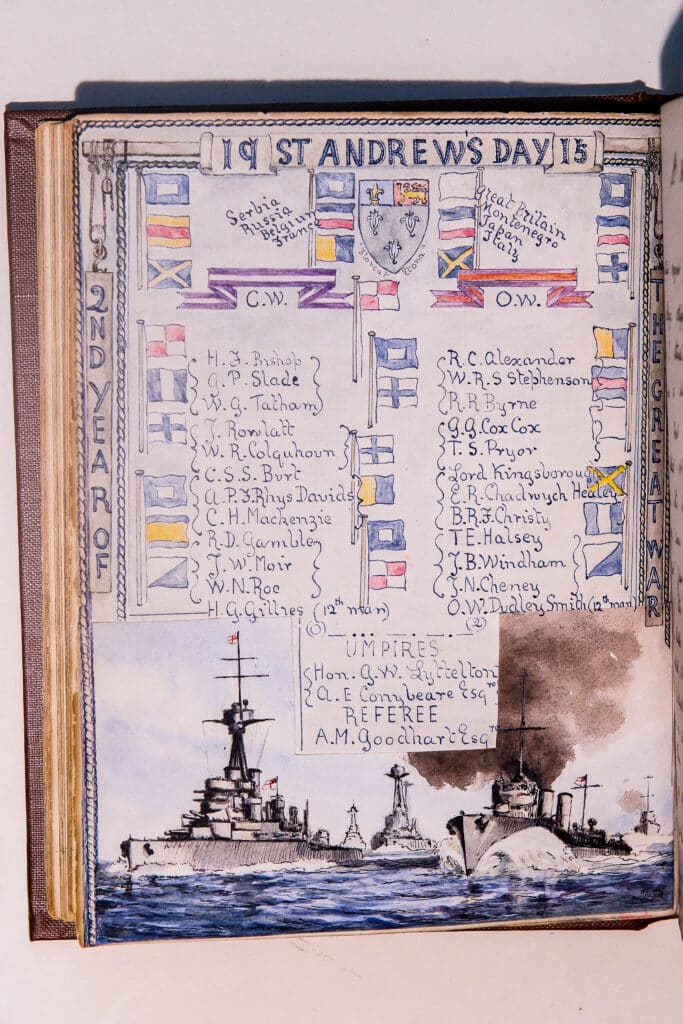
You can read more about the origins of the Wall Game in a previous Collections Spotlight post.
Absence
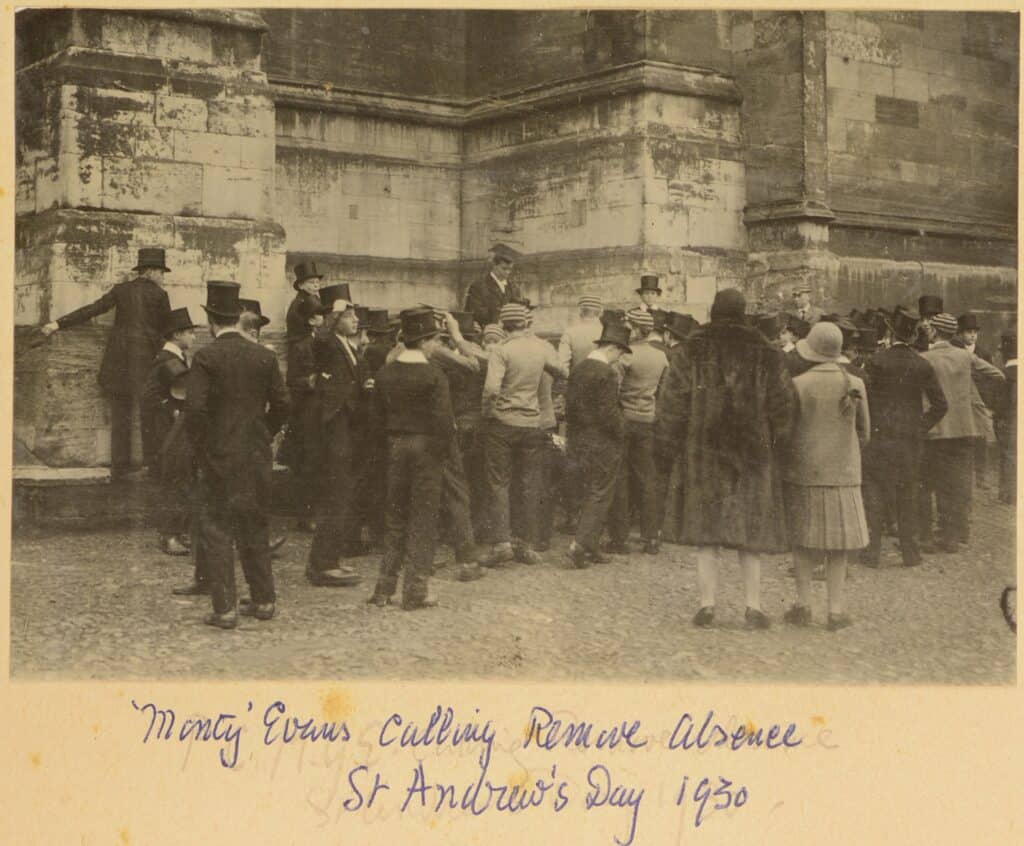
The last order of the day is Absence – calling the register. On the Fourth of June and St Andrew’s Day, Absence is made into more of an event, with boys waiting for their name to be called before being allowed to go home for Short Leave.
[1] The panel was designed in 1845 by Thomas Willement (1786–1871), one of the foremost stained-glass artists of the 19th century, as part of a ten-light window for a new boys’ library, located within College boarding house. By October 1845, the window had been installed in the impressive double-height library, which became known as Hawtrey’s Library. Hawtrey’s Library no longer survives, but all ten panels of the window are now on display in School Hall.
[3] Melvin (born 1935) is a British architect and a town planner, who was formerly chairman of the London Region of the Royal Institute of British Architects. He is also the author of several books on architecture and this work is one of over 90 pencil drawings he made between 1995 and 1997 to illustrate his book Eton Observed: An Architectural Guide to the Buildings of Eton (published 1998). Melvin presented the entire series drawings to the college in 2002.
[4] Hemy, who was born at sea, on the SS Madawaska, in 1852, spent much of his life in the north east of England. After an early career as a sailor, he studied art in Newcastle and under Belgium painter Charles Verlat in Antwerp. Hemy is best known as a marine and coastal painter and his works were widely exhibited, including at the Royal Academy and the Glasgow Institute of Fine Art. The Wall Game match played on St Andrew’s Day 1887 ended in a draw, with neither side scoring, although Sporting Life, reported that ‘the Oppidans had a little the best of it’.
[5] William Evans was the son of Samuel Evans, Drawing Master at Eton from 1808. After attending Eton, he abandoned medical training to study under watercolourists William Collins and Peter DeWint. In 1830 he became a member of the Society of Painters in Water Colours. Evans succeeded his father as Drawing Master at Eton and also bought a boys’ boarding house, still known as Evans’s.


